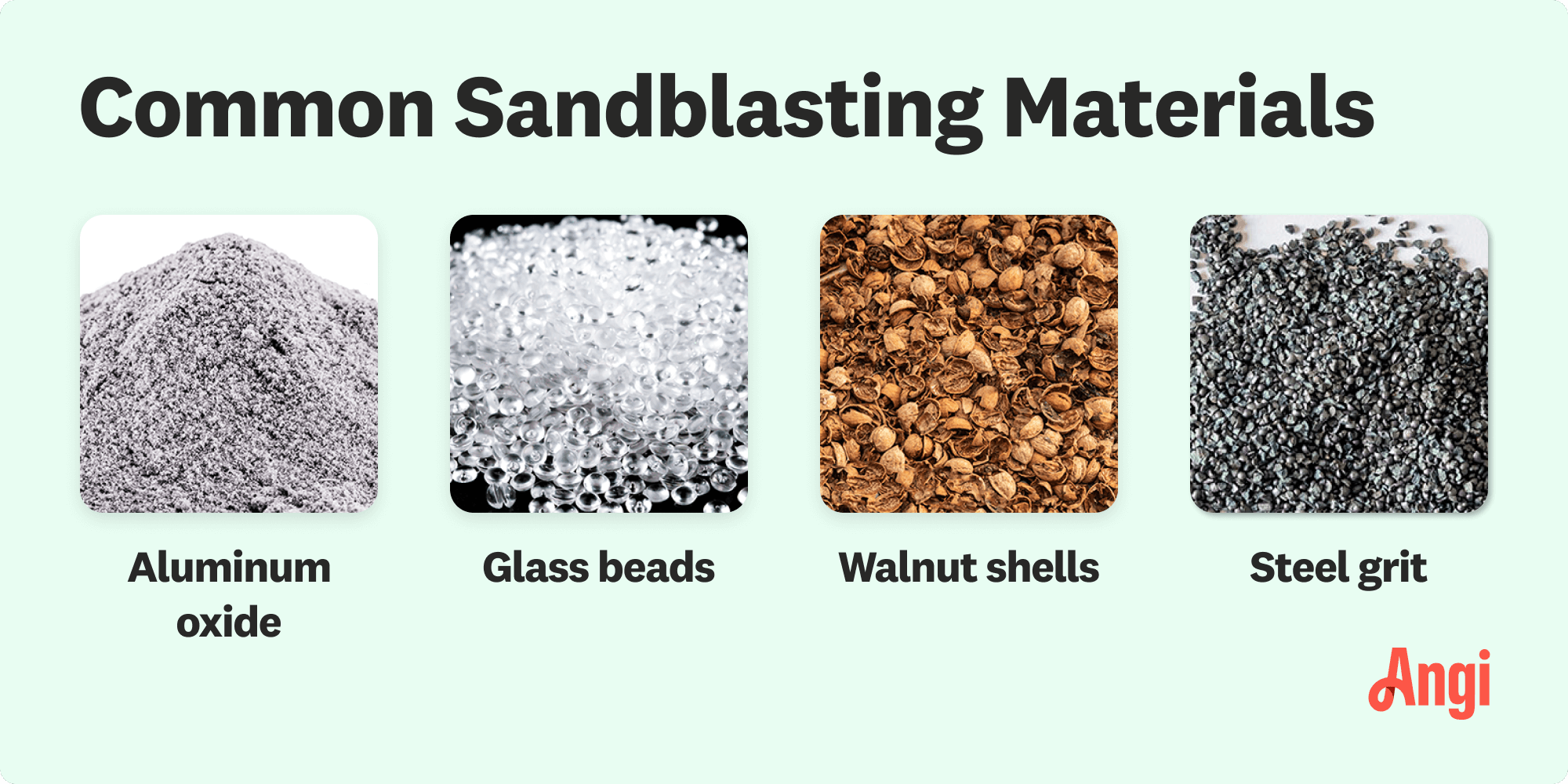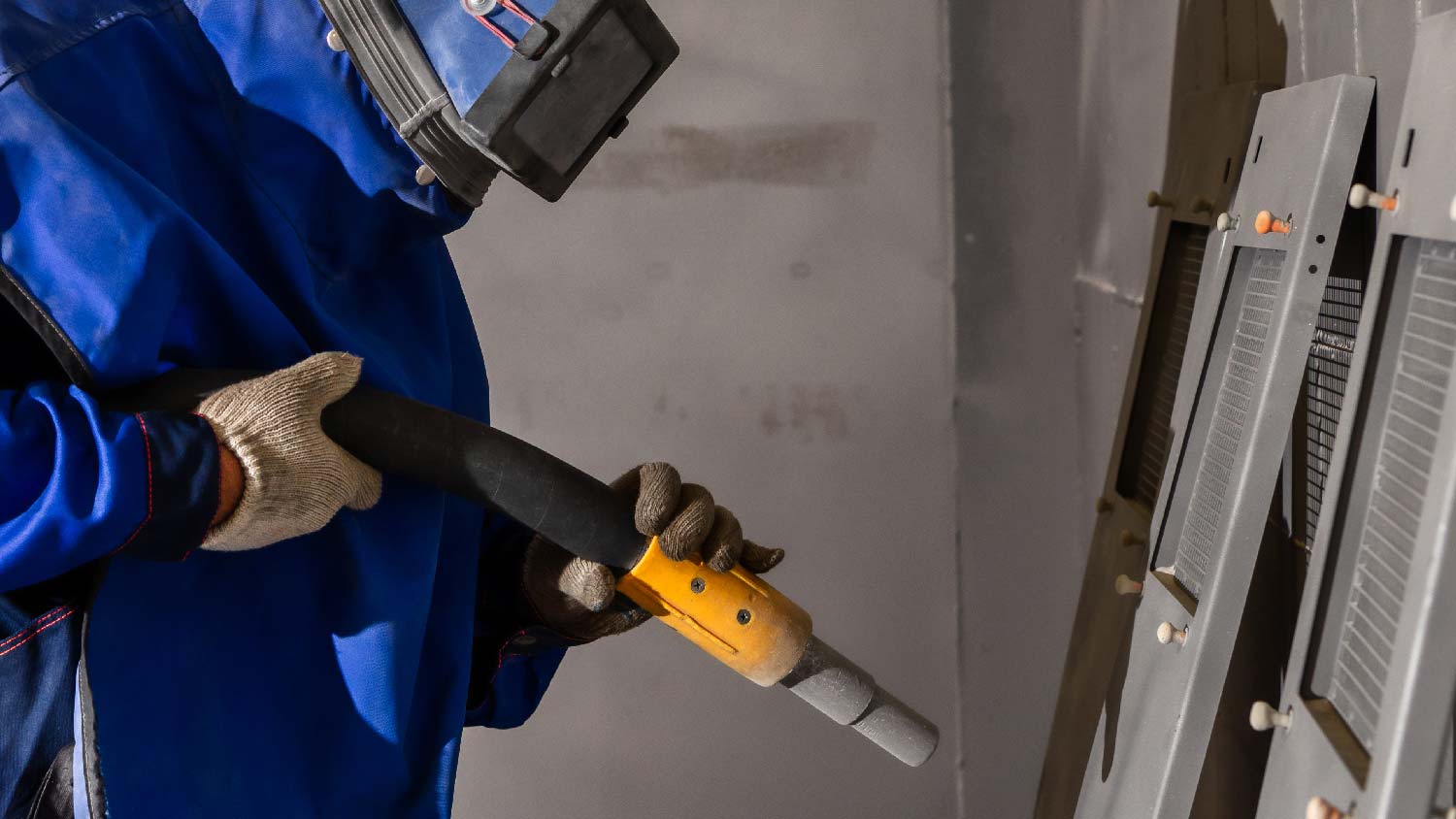
The cost to paint the interior of a house in Indianapolis, IN depends on size, layout, type of surface, and more. Learn what factors can influence your total in this guide.
Lower the pressure by understanding a few key questions


Sandblasting uses high pressure to clean and strip surfaces.
You can sandblast most hard surfaces and some delicate ones.
It’s best to hire a professional for your sandblasting project.
Sandblasting costs $1.50 to $7 per square foot on average.
You don’t always need to replace a surface if it’s rusted or painted over—that’s what sandblasting is for. This technique shoots small particles at incredibly high pressure against a surface. While it can seem like an aggressive method, your choice of sandblasting material affects the types of surfaces you can clean. Learn more about sandblasting, including how much it’ll cost and whether you can do it yourself.
Sandblasting is a process used to strip stubborn materials off surfaces by using a high-pressure stream of abrasive material to remove rust, paint, or other blemishes. Common abrasive materials used are steel grit, glass beads, aluminum oxide, and even walnut shells. These materials are forced through a system using compressed air and are directed at the material you want to sandblast. Sandblasting is the next step up from pressure washing.
Homeowners would use sandblasting if other gentler options won’t work. It’s a common method used to remove rust from metal and to prep surfaces for paint or other treatments.

You should use sandblasting when you want to remove a stubborn layer of material from a medium that can handle the direct and often harsh power of sandblasting. For example, you shouldn’t sandblast delicate brick or stucco, but you could sandblast iron, concrete, or stone. You can sandblast wood, but you need to choose gentler abrasive materials.
Homeowners looking to rough up a surface would use more abrasive sandblasting materials like aluminum oxide or crushed steel. For smooth surfaces, you’d use materials with a finer grit—glass beads, plastic beads, sugar sand, and garnet.

Before considering DIYing this work—something we strongly advise against—talk to a sandblasting company near you to discuss your options. They will know best what tools to use and equipment to bring, plus you won’t need to purchase or rent these yourself. Common tools and equipment include the sandblaster, the material used, a full protection suit, and cleaning materials.
| Pros | Cons |
|---|---|
| Removes material quickly | High damage potential |
| Versatile application | Requires protective gear |
| Inexpensive | Not DIY friendly |
| Can adjust surface texture | Messy |
This cleaning method certainly has advantages—it’s a cost-efficient way to clean or revive large sections of tough material, saving you the cost of replacement. Sandblasting can be a good fit for a variety of different projects.
However, it’s still a forceful method and can cause damage if your pro isn’t careful throughout the process. Sandblasting creates an enormous amount of potentially dangerous dust in the air, which is why protection equipment is so heavy-duty. Cleanup is quite involved, even after successful work.
Soda blasting is similar to sandblasting, except you use baking soda instead of harsher materials. When comparing sandblasting and soda blasting for your project, you need to understand the material you’ll be blasting. Hard mediums like stone and steel can handle tough sandblast materials. Soda blasting is better for softer materials like wood, fiberglass, ceramic tiles, and stucco.
The answer depends on the complexity of your project and other factors such as height (the higher the work, the higher the price), but most sandblasting work can be completed between $1.50 and $7 per square foot. The cost of sandblasting also depends on the material you use and the surface you’re cleaning. Stubborn media like porous rock will take longer and use more materials than smooth surfaces like steel.
If you plan on sandblasting your entire home, expect to pay an average of around $3,200. If you’re curious about the hourly rate, $50 to $80 per hour is common. While you can rent a sandblaster yourself for around $200, we don’t recommend it unless you have prior experience.
From average costs to expert advice, get all the answers you need to get your job done.

The cost to paint the interior of a house in Indianapolis, IN depends on size, layout, type of surface, and more. Learn what factors can influence your total in this guide.

The cost to paint the interior of a house in Los Angeles, CA depends on size, layout, type of surface, and more. Learn what factors can influence your total in this guide.

The cost to paint the interior of a house in Houston, TX depends on size, layout, type of surface, and more. Learn what factors can influence your total in this guide.

The German schmear technique can revitalize the look of your brickwork. Learn what German schmear is and what you should know before you get started.

An accent wall is a great way to elevate any room. Find out how much it costs to paint an accent wall and what factors affect how much you’ll pay.

When selecting the best paint for garage walls and ceilings, consider aesthetics, durability, ease of cleaning, and conditions in the space.